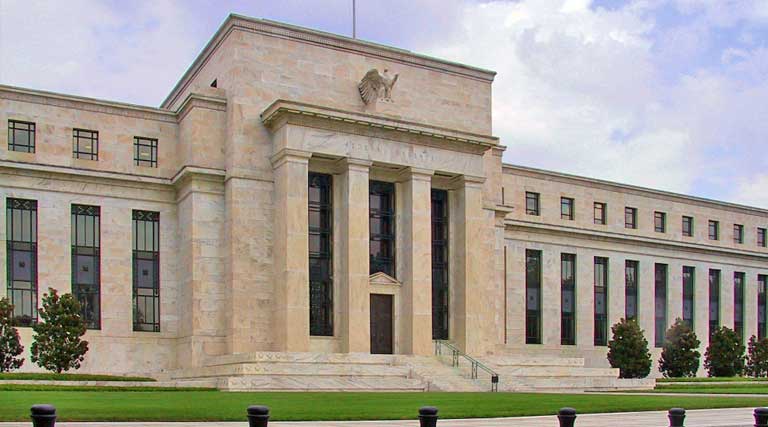Photo: The Federal Reserve Headquarters in Washington, D.C.
Photo Credit: Dan Smith
Published February 10, 2021
By Ross Marchand [via the Center Square]-
Lawmakers and a new administration are once again at odds over how best to continue the coronavirus relief effort. Congressional Republicans and President Joe Biden don’t see eye to eye on Biden’s proposed $1.9 trillion in COVID-19 related relief.
Lawmakers are understandably reluctant to saddle each household with nearly $15,000 in added debt during a uniquely difficult time in U.S. history.
Members of Congress are concerned that Washington, D.C. is eager to print more money despite hundreds of billions of dollars’ worth of previously authorized but unspent COVID relief money.
Before the federal government dives into yet another spending frenzy, officials should take careful account of unused relief funding. It’s time to tighten up the COVID-19 relief effort and put an end to loose accounting.
Without due accountability and oversight, even the best-intentioned plans can go awry.
The Paycheck Protection Program (PPP) enjoyed initial success and helped more than 5 million businesses get back on their feet during the worst pandemic in 100 years. But the sheer size of the program left the lending operation exposed to poor targeting and management.
Small businesses reported not being able to access the loans they desperately needed and computer glitches needlessly exacerbated suffering. When the program closed on Aug. 8, approximately $130 billion in funds were unused despite continued access problems.
At the conclusion of the program, lawmakers could have made a serious effort to get the funds in the hands of struggling business owners. The taxpayer dollars gathered dust for months amid partisan bickering, until another round of PPP was authorized in December. The $130 billion in unspent aid was to be “repurposed,” along with $275 billion in new PPP funding.
Perhaps if lawmakers allowed the first allocation of funding to run its course, there wouldn’t be the need for additional funding.
Unfortunately, this “spend first, account later” approach has dominated the COVID-19 relief effort. Despite calls to further subsidize education, Foundation for Research on Equal Opportunity fellow Dan Lips notes that school districts are sitting on plenty of unspent coronavirus aid.
According to Lips, “Based on the funds that were unspent as of November 30th and new awards made in January, state education agencies have between $53 [billion] and $63 billion in ESSER funds available in February 2021.”
Districts across the country can spend the estimated $23 billion required to comply with the Centers for Disease Control and Prevention’s COVID-19 mitigation measures, and still have at least $30 billion left over. Lawmakers are unlikely to consider these unspent funds before awarding districts billions more in taxpayer dollars.
By far, the biggest question mark surrounding the continued relief effort is the $455 billion worth of unspent funds that were supposed to assist in Federal Reserve lending operations.
Former Treasury Secretary Steven Mnuchin stated in late 2020 that he would put the money in a fund subject to Congressional oversight, but there have been few further discussions about the future of this money. Lawmakers have an opportunity to get a grip on spending and give these funds back to the American people in the form of broad-based tax relief.
In addition, Congress should carefully monitor any unspent relief funds and work with state and local officials to ensure that appropriated dollars are dispersed.
A careful, thorough effort to track unused spending would provide a lifeline to the economy without heaping more debt onto taxpayers. Continued relief is possible without breaking the bank.
About the Author:
Ross Marchand is a senior fellow for the Taxpayers Protection Alliance.






